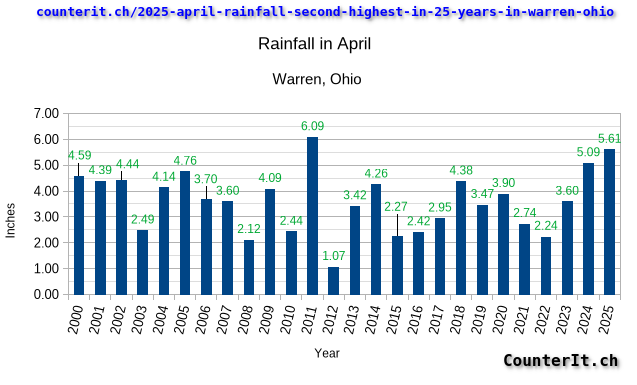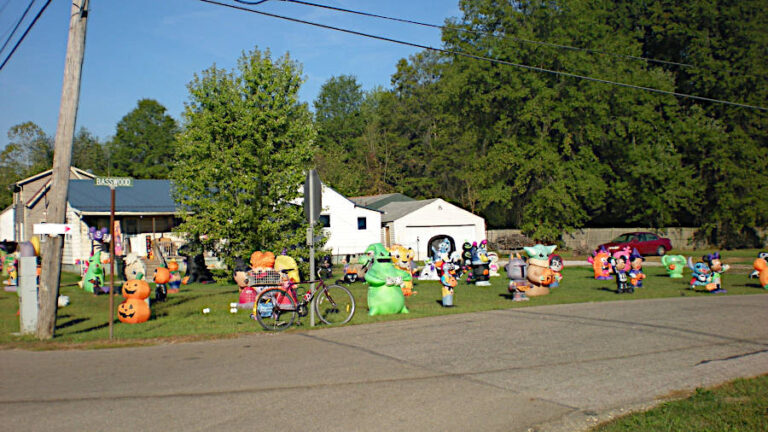Given people have been asking me how the garden growth is coming along, I thought I’d post a few pictures taken from the first week of August as well as a few pictures from early June when I began prepping the garden plot.
I finished planting everything by mid-June, which was three weeks or so behind schedule.
Also, as hinted at in my post from late June titled “Garden Life, Deer, Whistle Pigs, and Hunting,” the wild beasts devoured 25% of the items I planted (especially the sunflowers), and meaningfully damaged another 25% of my plants (particularly the pepper plants).
Tilled Garden Plot
Here’s the plot after an initial till on about June 1st.
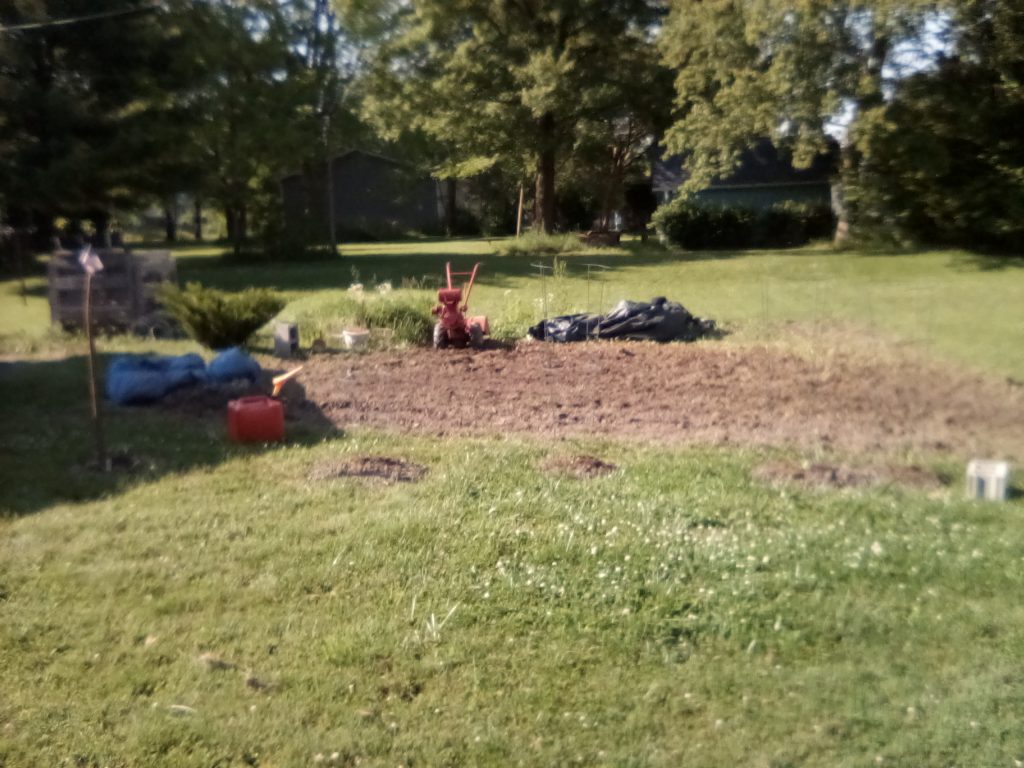
In the upper left of the photo is my homemade compost bin. I used four scrap wood pallets and secured them together with zip ties. However, this summer I put a few long screws in them since the zip ties kept breaking.
Next to the compost bin, to the right, is an evergreen I planted in the spring of 2020. It’s a Sea Green Juniper, which will grow in height from four to six feet. It’s only about three feet tall now.
Between the Juniper and the red rototiller is the stone circle perennial herb garden I wrote about in my post titled “A Lazy Person’s Herb Garden – Perennials and a Wading Pool” from mid-July.
The three circular areas in the foreground were dug with a shovel; I planted tomatoes in these areas.
Lastly, on top of the compost bin are three potted pepper plants. I put these there as I anticipated visits by deer and didn’t intend to install a fence this season.
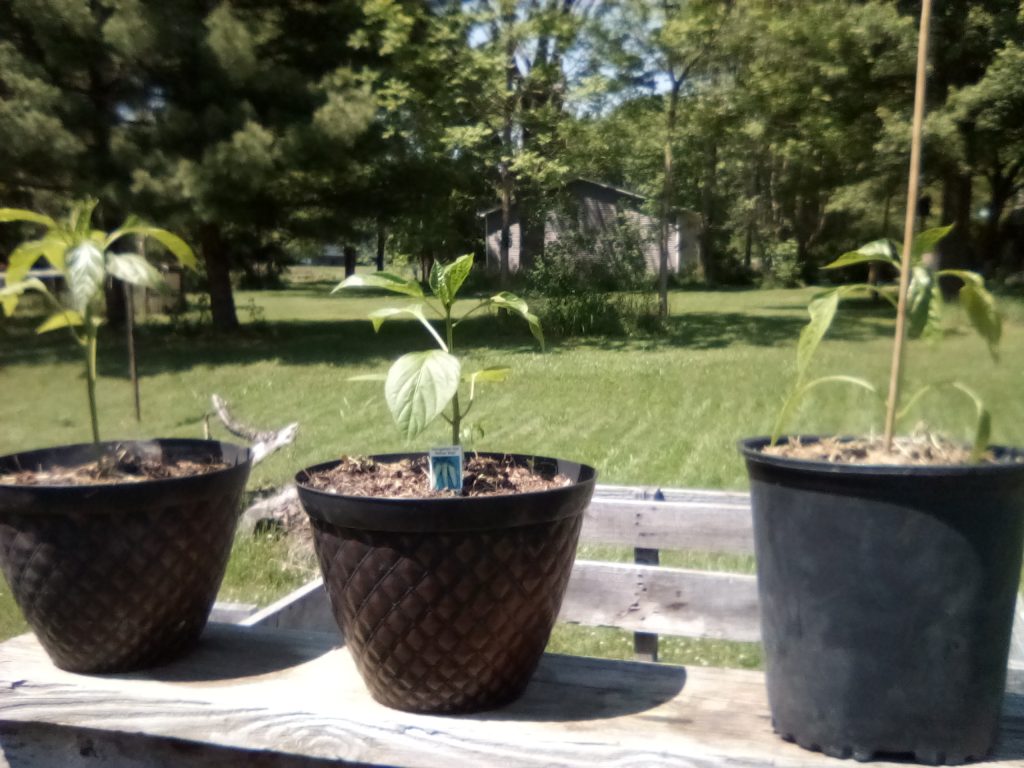
My Six Work Horses
The red rototiller is a vintage 1977 Troy-Bilt Horse.
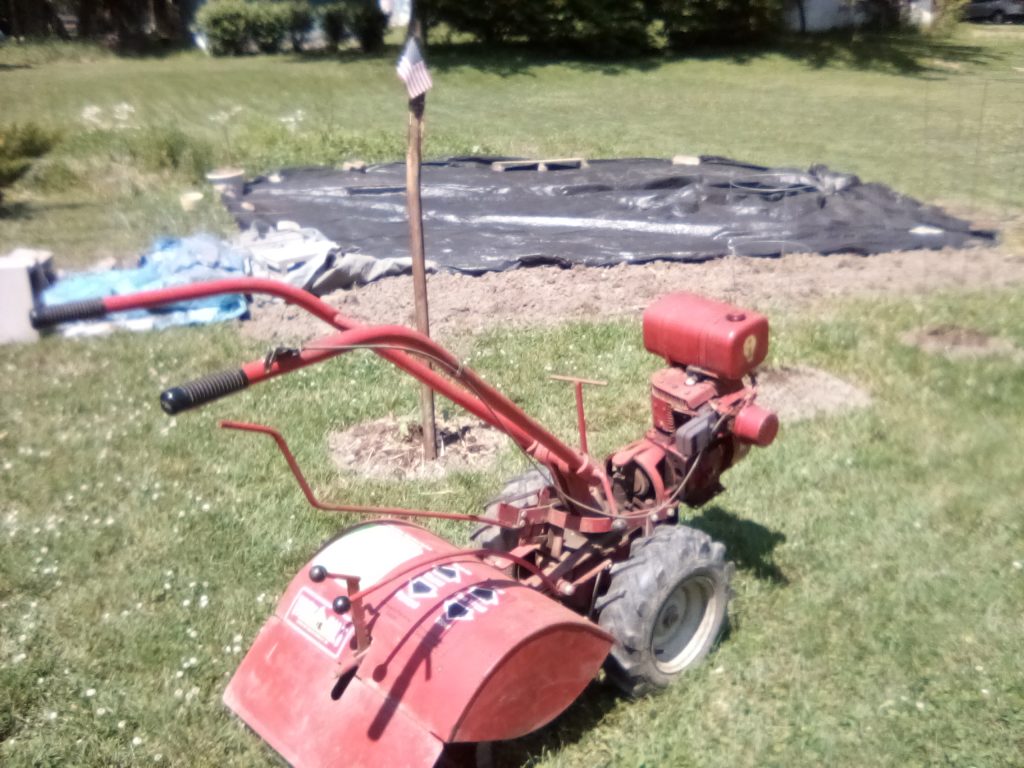
It was Made in the USA in Troy, New York by Rototiller Corp.
Although, at the time of manufacture, Rototiller’s ownership had changed hands a few times, and in 1977 it was owned by Garden Way Manufacturing, which one can read stamped on the tiller’s back cover plate in the image (below) that has the manual in it.

I bought it from the son-in-law1He recently had back surgery and is now using a community garden. of the original owner, who kept the original manual, advertising leaflets, and parts-booklet. Pretty cool.
Brief History
The company initially just distributed rototillers made in Germany by Siemens. But, by the late 1930s, Rototiller Corp. began manufacturing its own rototiller, which we now associate with Troy-Bilt.
Nevertheless, after being acquired, of sorts, by different companies over the years, the company (the rototiller business was owned by Garden Way Manufacturing) closed business in 2001. However, MTD Products of Valley City, Ohio2 It’s about 25 miles southwest of Cleveland and 25 miles northwest of Akron. acquired the Troy-Bilt brand. Since 2021, though, MTD Products and the Troy-Bilt brand have been owned by Stanley Black & Decker.
What I find as interesting, actually surprising, is Troy-Bilt is still Made in USA, at least “select products” according to the company’s website:
Troy-Bilt® is headquartered in Valley City, Ohio, and our reliable equipment includes select products that are designed, built and tested right here in the U.S. – from Ohio and Mississippi to Tennessee and Arizona.
Specifications
The booklet shows the following:
- List price: $697 (1977)3A new Troy-Bilt Horse costs upwards of 3x this amount today due to the massive loss of our fiat currency’s purchasing power.
- Horsepower: 6
- Weight: 268 pounds
- Engine: Tecumseh
Booklet (snippet)
Here are a few pages from the manual, which includes a nice summary of the history of the companies, and the brochure, which includes the specs.
Mid-Summer Garden
Fast forward to the first week of August.
In less than two months, the garden went from a tilled plot of about 1,000 square feet, to fairly lush green garden growth. The spots with nothing growing are areas where animals and birds dug-up vegetable seeds or devoured the little seedlings.
Here’s an angle shot of the garden showing corn (about six to seven feet tall), veggies (a couple of ripe tomatoes that have since been eaten – by me), the compost bin, a small wood stack (in the back), and towering wild fennel (going to seed already).
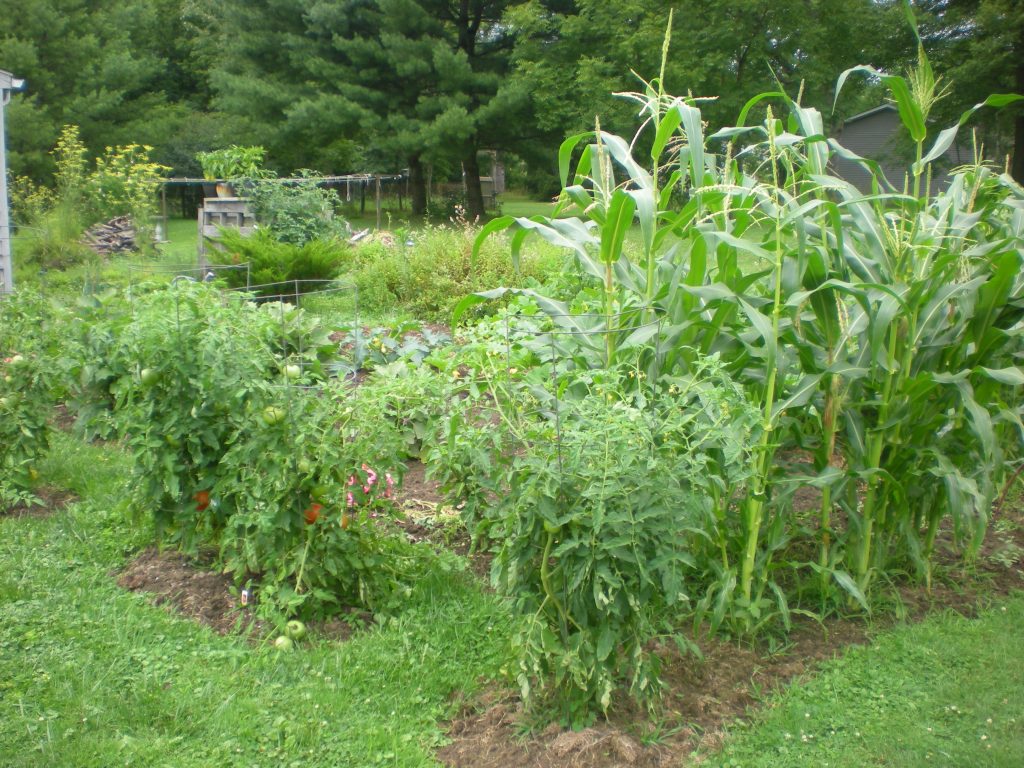
By the way, I was at my local ALDI’s grocery store last week, and it was selling four relatively small ears of corn for $3.50+. My corn patch, which I planted from saved seeds from the prior year, will likely produce about 40 ears (maybe more) of non-GMO, organically grown corn.
Another view from the side. A couple of now-plump whistle pigs live under my neighbor’s shed in the background.
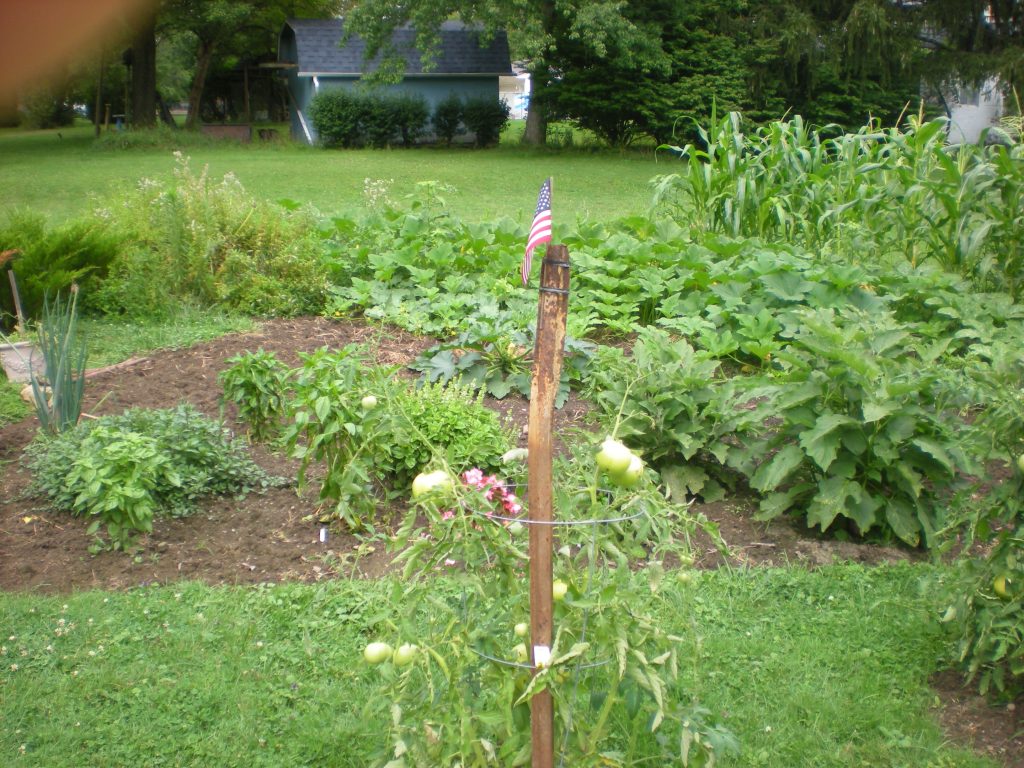
I added another pot of peppers on top of the compost bin. They seem to have stunted growth.

Also, by the pepper plant on the right, if you look closely, you might see a stem from a tomato plant. That’s because a tomato plant started to grow up the side of the compost bin, so I just tied it to the pallet and let it grow.
What about the Chicago Hardy Fig tree that I left inside this year?
Well, she’s having her best year ever in her third season. My guess is she’ll produce a dozen figs. Right now, she has seven small figs growing.
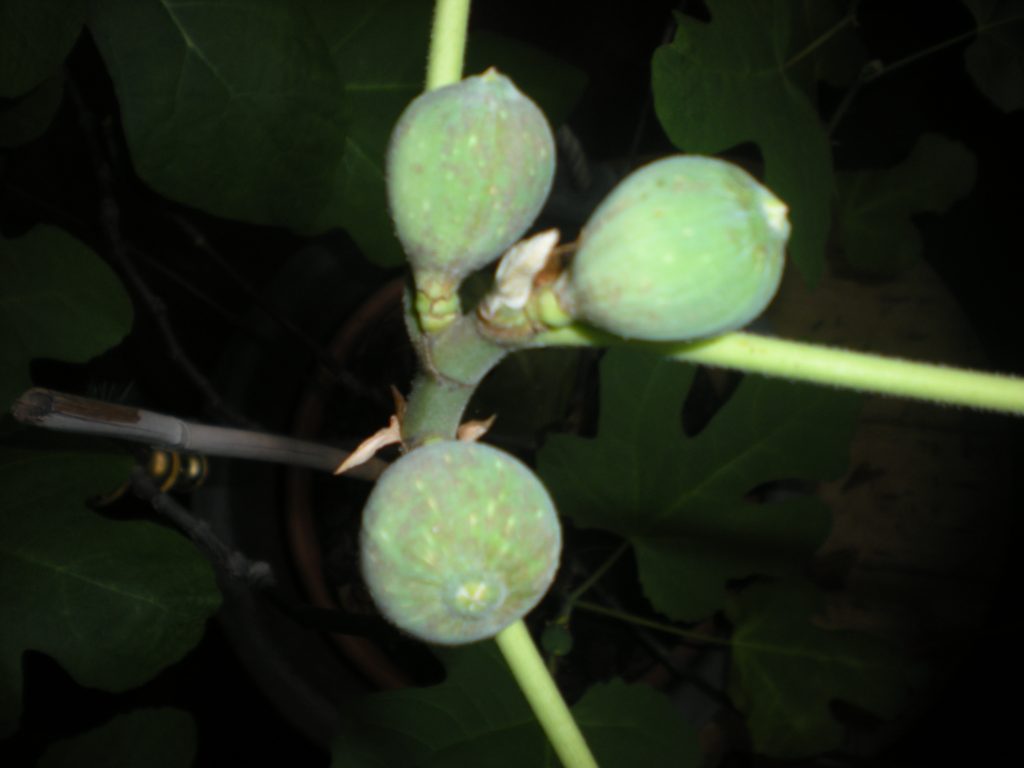
Closing Words
So, how is your garden growth performing this season? Do you have thoughts to share regarding rototillers or other farm and garden implements?
Footnotes
- 1He recently had back surgery and is now using a community garden.
- 2It’s about 25 miles southwest of Cleveland and 25 miles northwest of Akron.
- 3A new Troy-Bilt Horse costs upwards of 3x this amount today due to the massive loss of our fiat currency’s purchasing power.
